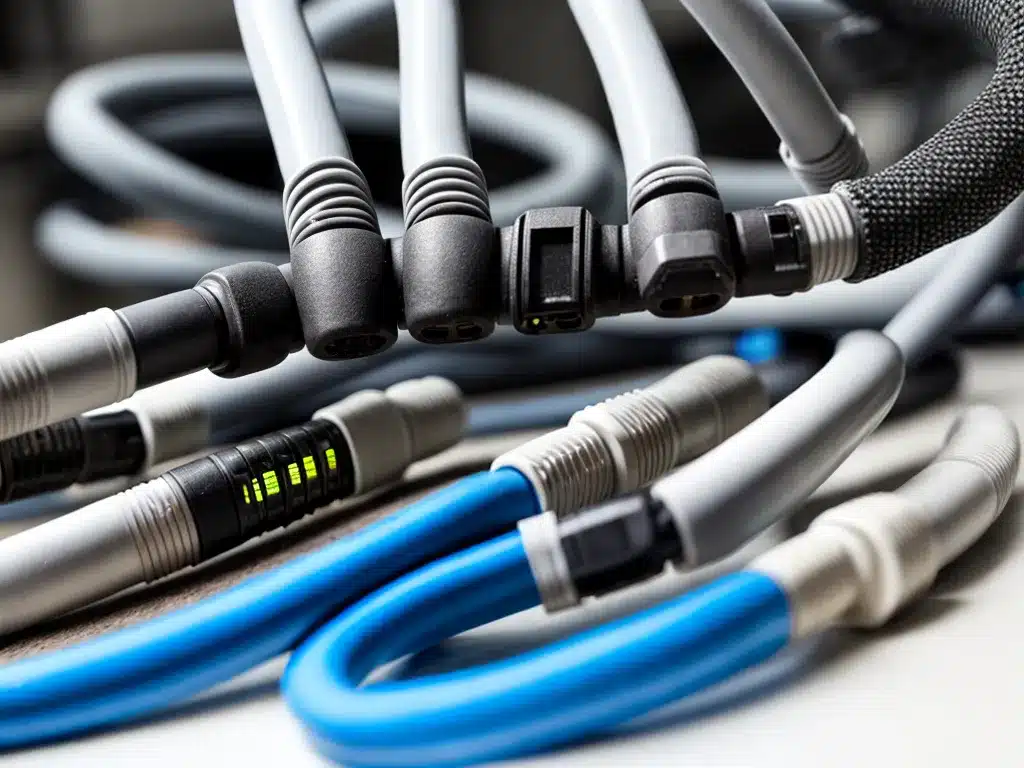
Upgrading your Ethernet cabling from Cat5 to Cat6 is an important decision that deserves careful consideration. While both standards will work for basic home networking, Cat6 offers significant advantages for more demanding applications. In this article, I cover the key differences between Cat5 and Cat6 and provide guidance on when upgrading makes sense.
What is the Difference Between Cat5 and Cat6?
Cat5 and Cat6 refer to specifications for twisted pair copper cabling used in Ethernet networks. The key differences are:
-
Speed – Cat5 is rated for 100 MHz while Cat6 is rated for 250 MHz. This enables Cat6 to support faster Ethernet speeds up to 10 Gbps over short distances. Cat5 maxes out at 1 Gbps.
-
Noise resistance – Cat6 uses thicker twisted pair wires and more effective shielding. This makes it better able to resist electromagnetic interference (EMI) and crosstalk.
-
Bandwidth – The higher frequency rating of Cat6 provides more bandwidth headroom which allows it to support faster protocols.
-
Cable runs – Cat6 cables can maintain signal integrity over longer distances than Cat5. For 10GBASE-T, Cat6 has a max length of 55 meters vs 37 meters for Cat5.
In summary, Cat6 is better optimized for high speed networks and harsh electrical environments.
When Should You Upgrade from Cat5 to Cat6?
Here are some common scenarios where upgrading to Cat6 makes sense:
-
You want speeds over 1 Gbps – If you need bandwidth over 1 Gbps to support applications like video streaming or transferring large files, Cat6 is a must. Cat5 is limited to 1 Gbps networks.
-
Future-proofing for higher speeds – Even if you don’t need 10 Gbps now, upgrading to Cat6 will allow you to take advantage of higher speeds down the road without re-cabling your network.
-
Long cable runs – The longer reach of Cat6 allows you to extend your cabling distances. This gives you more flexibility in positioning network devices.
-
Noisy electrical environments – Cat6’s superior noise resistance will provide more reliable connections in environments with lots of EMI such as industrial facilities.
-
You’re renovating or building a new home – Putting in Cat6 now avoids costly re-cabling down the road and provides an easy 10 Gbps upgrade path.
Reasons You Can Stick with Cat5
For many home and small business users, Cat5 may still be adequate depending on your needs:
-
You only need gigabit speeds – If you just want a standard 1 Gbps network, Cat5 will work fine and is cheaper than Cat6.
-
Short cable runs – For runs under 100 feet, Cat5 and Cat6 both support gigabit Ethernet. The longer reach of Cat6 is only beneficial for larger spaces.
-
Office environment – Cat5 will be satisfactory for typical office environments that don’t have excessive interference.
-
Cost savings – Sticking with Cat5 allows you to save on material costs if you don’t need the capabilities of Cat6.
Key Takeaways on Cat5 vs Cat6
-
Cat6 supports faster network speeds (10 Gbps) over longer distances than Cat5.
-
It offers superior resistance to crosstalk and EMI interference.
-
Upgrading to Cat6 makes sense for high speed networks but isn’t necessary for standard gigabit.
-
For new installations, Cat6 provides better future-proofing as network speeds increase.
-
Consider bandwidth needs, cable runs, electrical interference, and cost when deciding between Cat5 and Cat6.
So evaluate your current and future networking requirements to determine if upgrading to Cat6 is worthwhile. It provides headroom for faster speeds and better performance but isn’t always mandatory. Carefully weigh the pros and cons for your situation.












